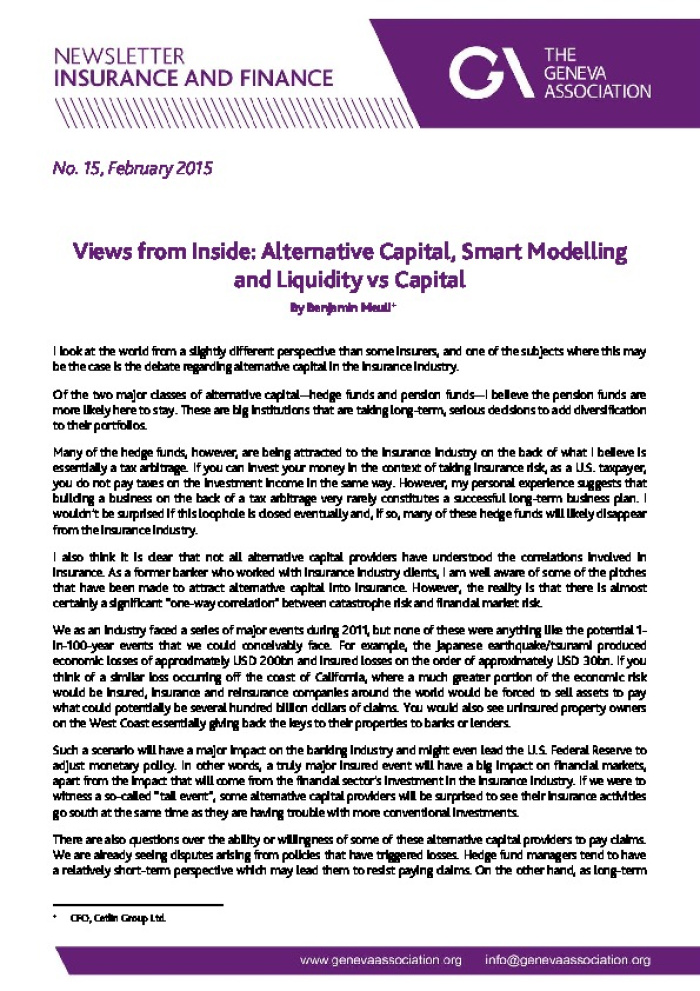Views from Inside: Alternative Capital, Smart Modelling and Liquidity vs Capital
Article from Insurance and Finance Newsletter No.15. CFO B. Meuli lifts the lid on the increasing quantity of alternative capital entering the insurance market and the challenges and opportunities it represents.

No. 15 , February 2015 Views from Inside: Alternative Capital , Smart Modelling and Liquidity vs Capital By Benjamin Meuli+ I look at the world from a slightly different perspective than some insurers, and one of the subjects where this may be the case is the debate regarding alternative capital in the insurance industry. Of the two major classes of alternative capital ?hedge funds and pension funds ?I believe the pension funds are more likely here to stay. These are big institutions that are taking long -term, serious decisions to add diversification to their portfolios. Many of the hedge funds, however, are being attracted to the insurance industry on the back of what I believe is essentially a tax arbitrage. If you can invest your money in the context of taking insurance risk, as a U.S. taxpayer, you do not pay taxes on the investment income in the same way. However, my personal experience suggests that building a business on the back of a tax arbitrage very rarely constitutes a successful long -term business plan. I wouldn?t be surpri sed if this loophole is closed eventually and, if so, many of these hedge funds will likely disappear from the insurance industry. I also think it is clear that not all alternative capital providers have understood the correlations involved in insur ance. As a former banker who worked with insurance industry clients, I am well aware of some of the pitches that have been made to attract alternative capital into insurance. However, the reality is that there is almost certainly a significant ? one-way correlation ? between catastrophe risk and financial market risk. We as an industry faced a series of major events during 2011, but none of these were anything like the potential 1 - in -100- year events that we could conceivably face. For example, the Japanes e earthquake/tsunami produced economic losses of approximately US D 200 bn and insured losses on the order of approximately USD 30bn. If you think of a similar loss occurring off the coast of California, where a much greater portion of the economic risk would be insured, insurance and reinsurance companies around the world would be forced to sell assets to pay what could potentially be several hundred billion dollars of claims. You would also see uninsured property owners on the West Coast essentially giving back the keys to their properties to banks or lenders. Such a scenario will have a major impact on the banking industry and might even lead the U.S. Federal Reserve to adjust monetary policy. In other words, a truly major insure d event will have a big impact on financial markets, apart from the impact that will come from the financial sector?s investment in the insurance industry. If we were to witness a so- called ?tail event ?, some alternative capital providers will be surpris ed to see their insurance activities go south at the same time as they are having trouble with more conventional investments. There are also questions over the ability or willingness of some of these alternative capital providers to pay claims. We are alre ady seeing disputes arising from policies that have triggered losses. Hedge fund managers tend to have a relatively short -term perspective which may lead them to resist paying claims. On the other hand, as long -term + CFO, Catlin Group Ltd .